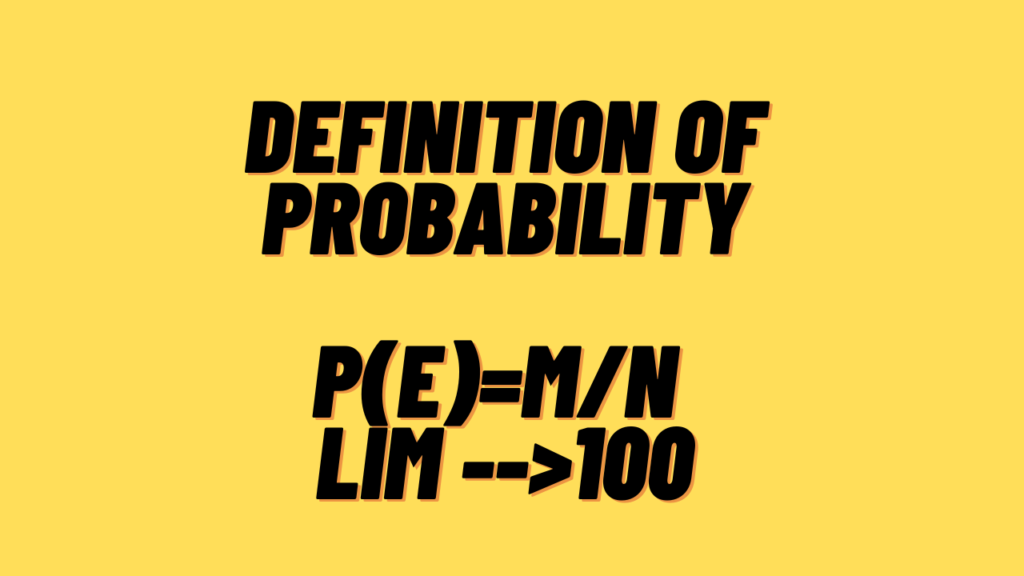Mathematical or Classical Probability-
If a random experiment is conducted which results in n exhaustive, mutually exclusive, and equally likely outcomes and there are m favorable cases of occurrence of an event E.
Then probability of happening event E is
P(E)=m/n
Suppose you are tossing a coin and want to get probability of getting head then
E—> Occurrence of head
m=1
n=2
P(E)=1/2
Statistical or Empirical Probability-
If in N trials an event happens M times then the probability of happening of an event E is defined as
P(E)= lim N–>∞ M/N
If a coin is tossed 100 times and head comes 55 times then the probability of happening event E
P(E)=55/100= 0.55
See the video
